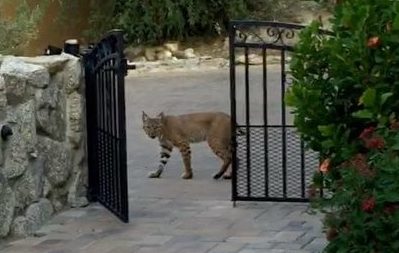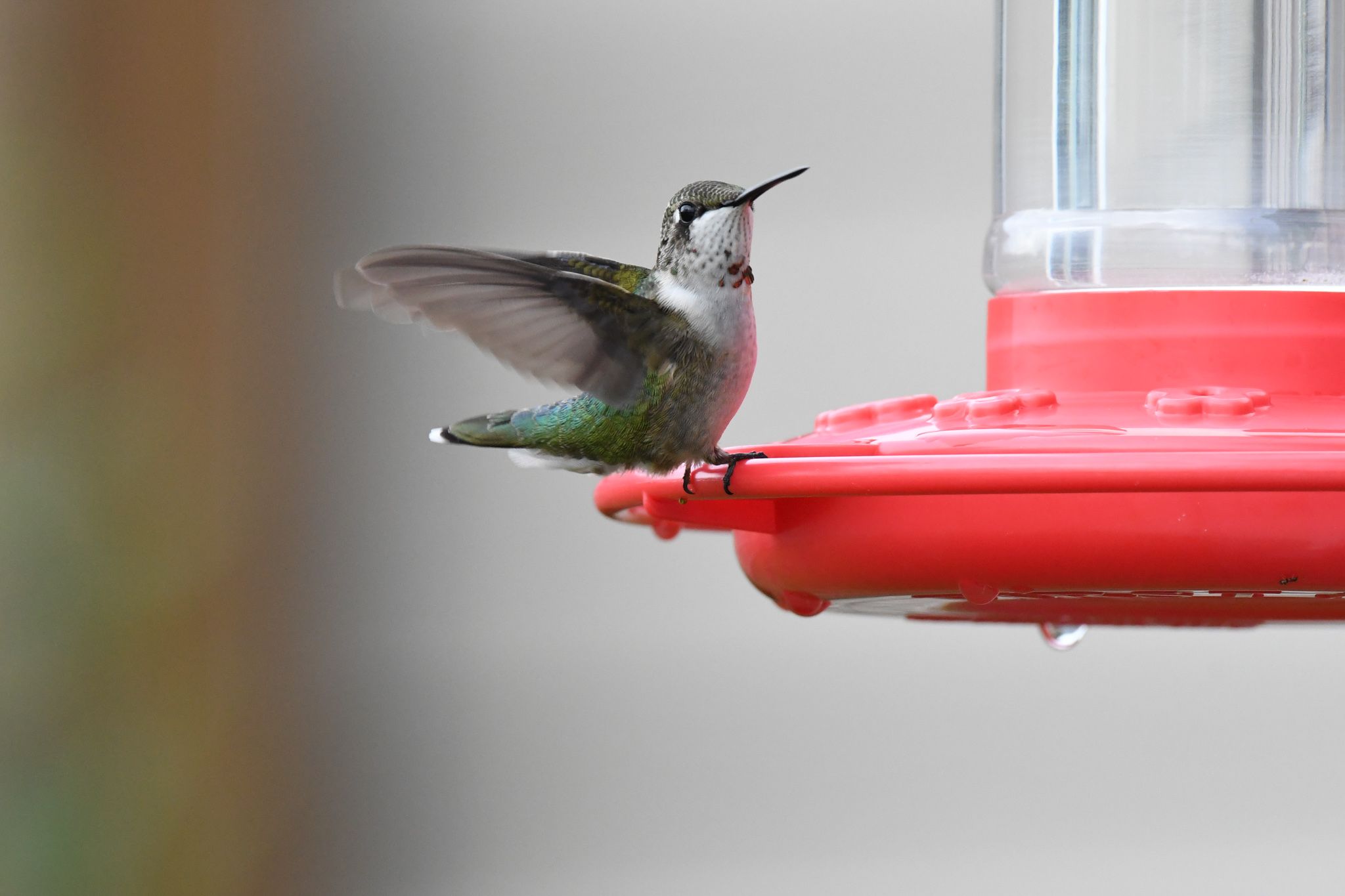
*Photo credit: © Claire Arnot
Yes, we have bobcats in the greater Phoenix area. In fact, bobcats are common throughout Arizona and found in all contiguous states in the USA with possibly one or two exceptions. In Arizona, and specifically the Sonoran Desert, they especially thrive in forested mountains, rocky canyons and dense brush areas. Sometimes referred to as wildcats, the development and occupation of their natural habitat has forced bobcats to adapt to living in more populated areas which include our suburbs and the outskirts of cities.
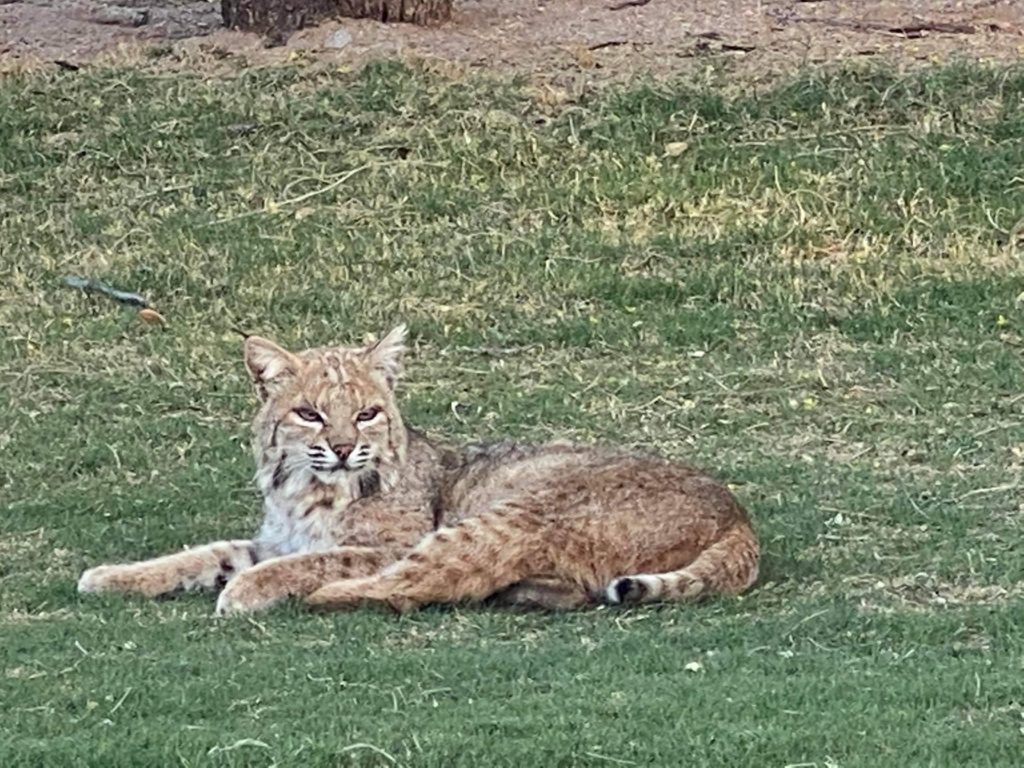
*Photo credit: © Cindy Beardsley
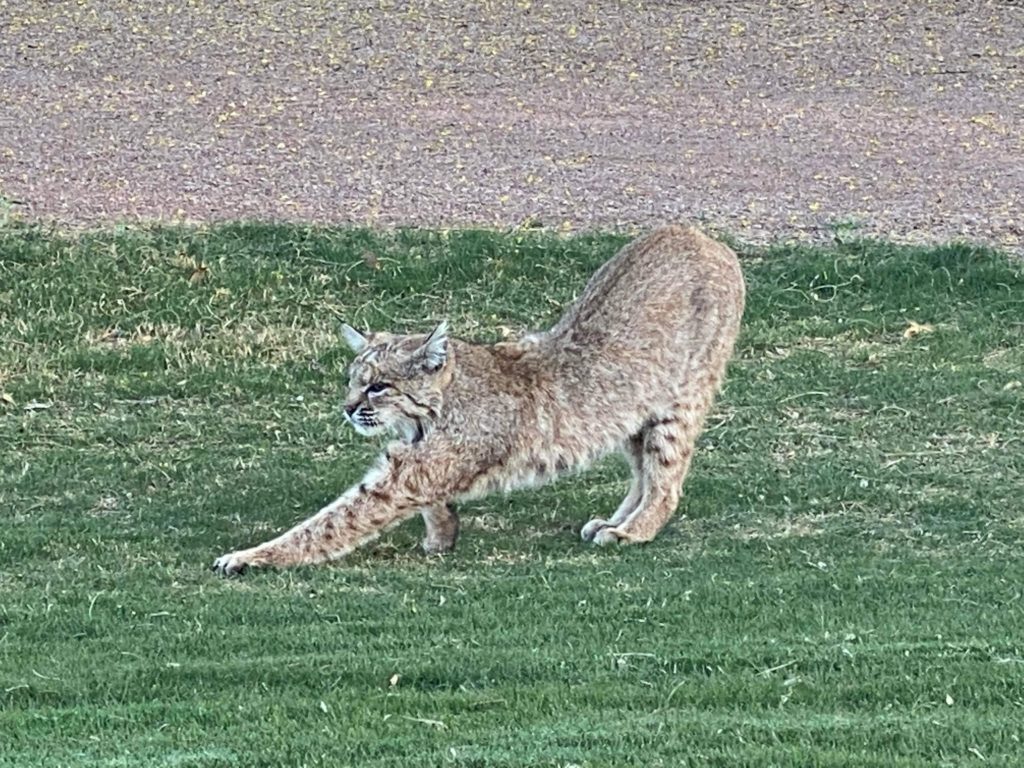
*Photo credit: © Cindy Beardsley
Identifying Bobcats
Bobcats, named for their bobbed tails, are bigger than house cats but smaller than mountain lions. They have flat faces, furry cheeks, long legs and big paws. Size-wise, they are 18 – 24 inches tall, 2 – 3 feet long, weigh 15 – 35 pounds and have tails that are 2 – 8 inches in length. Bobcats can jump heights of 10 plus feet and climb small trees. On the move, they are usually solitary unless it’s a female moving kittens between dens, siblings or mating pairs. In Arizona, breeding usually occurs December through April. The kittens are born April to early June and litters are mostly 2 – 3 in number. The kittens stay with their mother for most of their first year and start learning to hunt at 4 – 5 months. The average lifespan of a wild bobcat is 12 – 15 years.

*Photo credit: © Cindy Beardsley
Bobcat Behaviors
Pouncing on their prey like mountain lions, Arizona bobcats are opportunistic carnivores with a menu that includes rabbits, rodents, other small mammals, birds and occasionally lizards and snakes. Occasionally they are seen eating small deer and pronghorns. Unsupervised cats and small dogs also provide meals to hungry bobcats who are known to visit backyards in search of food and water.
These shy and often reclusive animals are nocturnal hunters but may be spotted sleeping or reclining during daylight hours. Some favorite roosts are dens, low tree branches, hollow logs, tree and bush thickets, and caves. In developed areas bobcats choose patios, under decks, empty lots, enclosed yards, rooftops or driveway culverts – any place where they feel secure for a daytime nap.
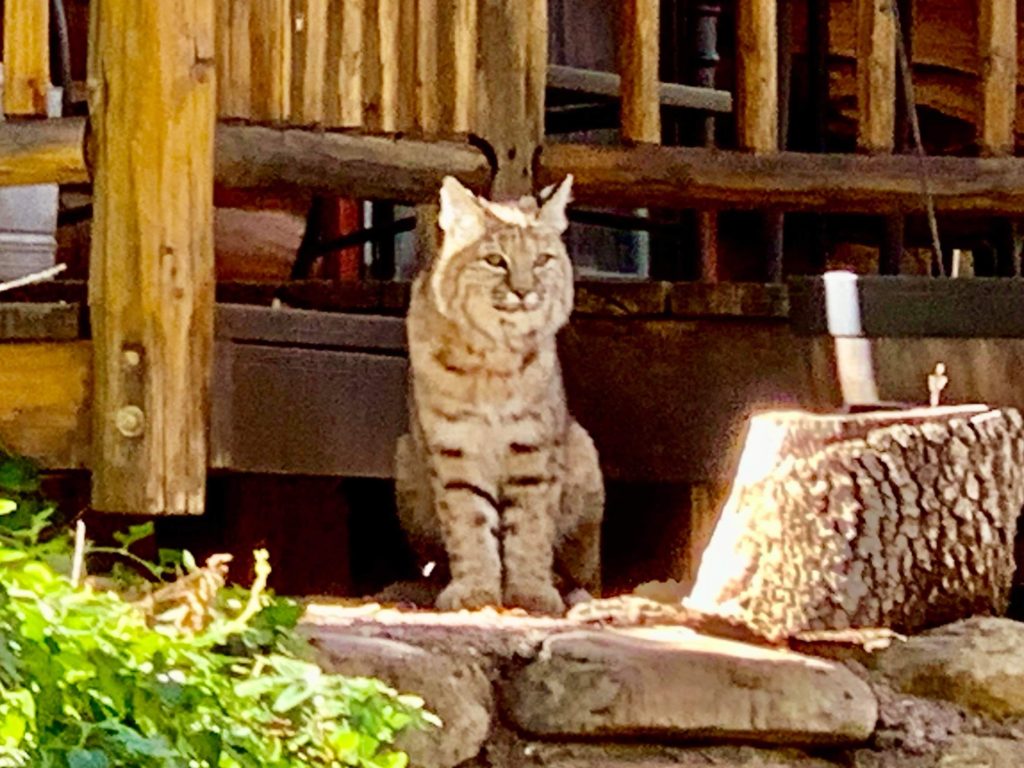
*Photo credit: © Foofoo Sullivan
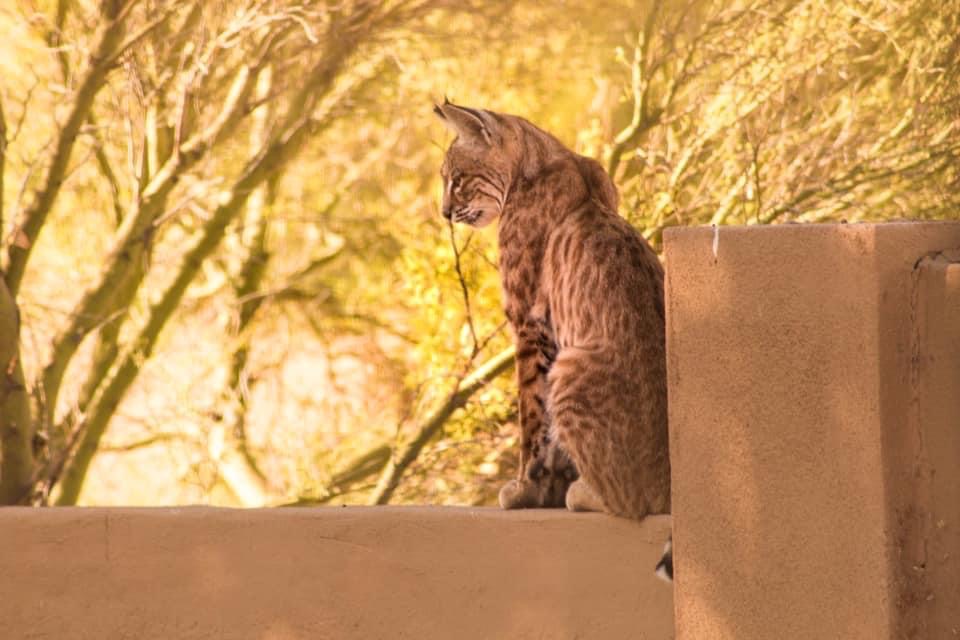
*Photo credit: © Beth Tierney Jablonski
It’s important to note that bobcats almost never attack humans. The few documented cases involve bobcats with kittens or rabies; however, rabies in bobcats is very rare.
In Arizona bobcats are considered a species of concern with populations relatively stable overall. You must have a license to hunt bobcats and keep in mind that most Arizona cities ban shooting firearms within city limits. Possession of live bobcats is illegal.

*Photo credit: © Beth Tierney Jablonski
What To Do If You See A Bobcat
- As with all wildlife, keep your distance! Attempting to touch or feed is not appropriate.
- Do not turn your back or run which may invite the cat to chase or attack you. Instead, back away and use loud noises and arm movements to distract and scare away.
- Spraying with a hose or throwing water are also deterrents since, like most other cats, they do not like water.
- If you have a small pet, pick it up to make the pet appear larger.
- If the cat appears to be unhealthy, please contact Arizona Fish and Game or your local wildlife commission. Do not attempt to capture or treat.
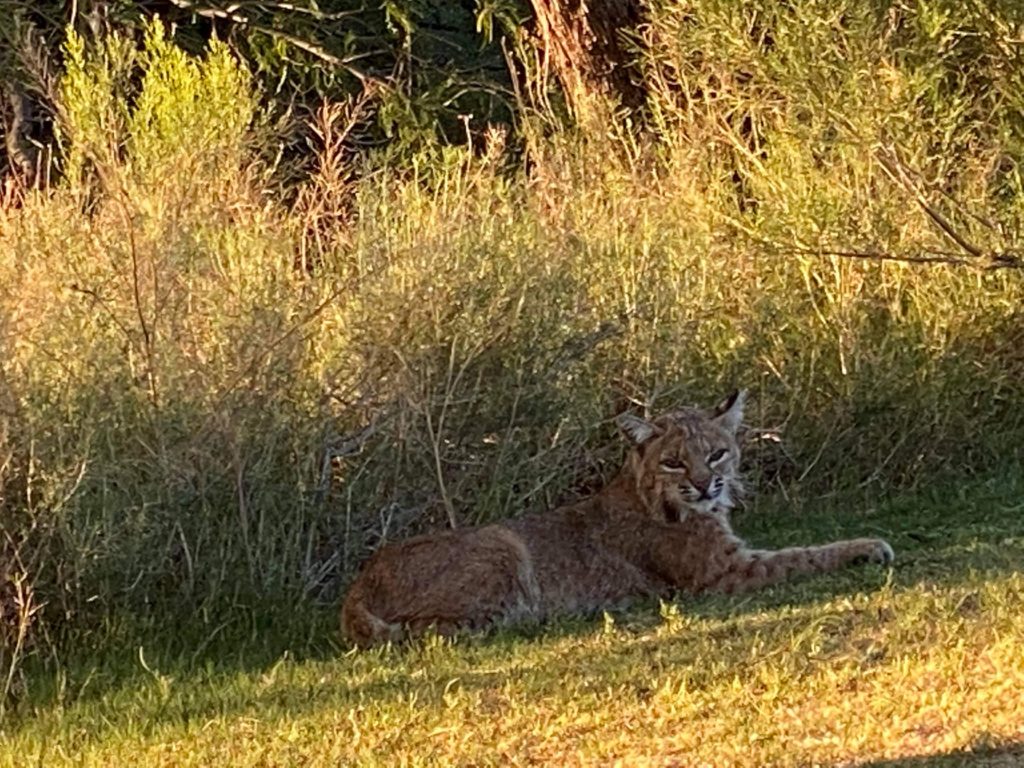
*Photo credit: © Cindy Beardsley
Important Wildlife Safety
Wild animals are exactly that, WILD! Their response to human encounters is unpredictable at best. When wild animals injure people they are removed or euthanized because of people’s behaviors. Please act responsibly!
The following applies to all wildlife and within the greater Phoenix area especially relates to bobcats, peccaries and coyotes.
- Keep a respectable distance from all wildlife and do not interfere with their natural behaviors.
- Never feed or harass wild animals.
- When hiking, stay on trails and keep pets under control on a short leash.
- Supervise your pets in yards and especially dusk to dawn.
- Trim vegetation around your home to discourage animals from seeking refuge.
- Avoid leaving food overnight in front or back yards. This includes birdseed, pet and human food.
- Report unhealthy looking animals to the local wildlife commission. Never attempt to capture or treat.
Arizona Vacation Home Rentals has a home, Bobcat Den, that has a neighborhood bobcat. The cat is sometimes spotted napping in the home’s front and back yards. It’s quite likely that you will view bobcats at some of our other homes and especially if there are green spaces that border the homes.
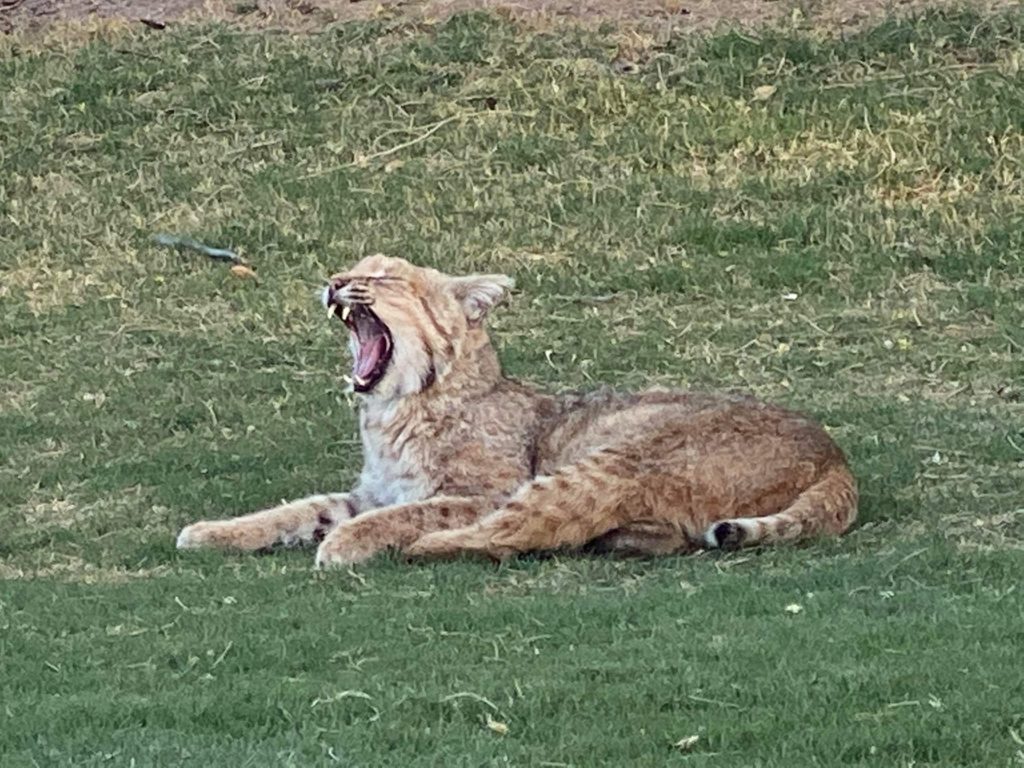
*Photo credit: © Cindy Beardsley
Save money and support local business by booking directly through
Arizona Vacation Home Rentals
Phone/Text: 480.626.4072
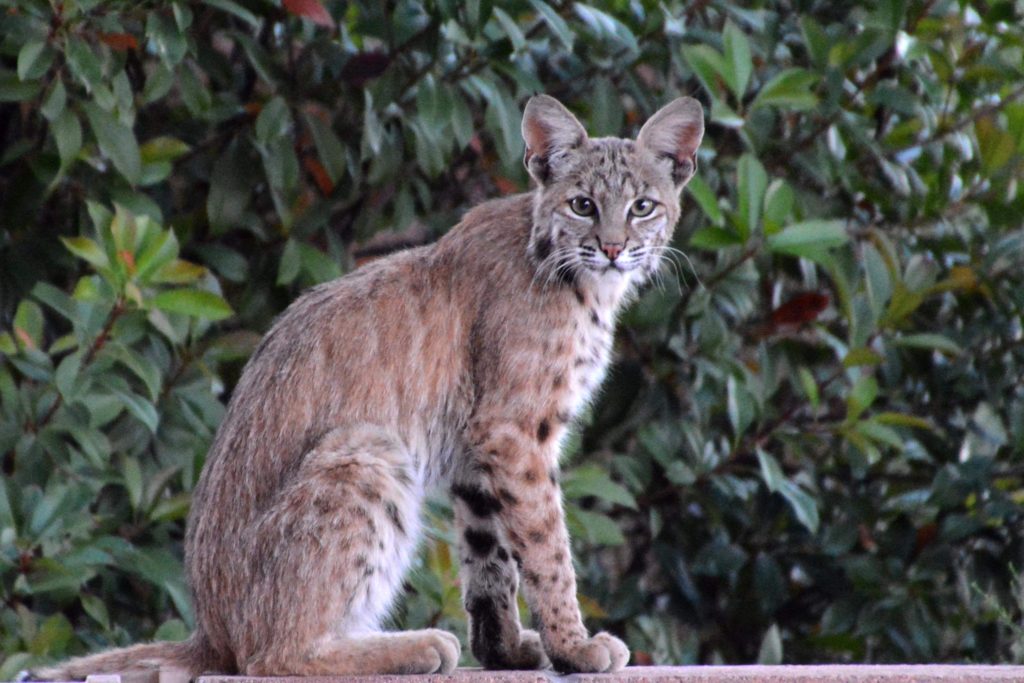
*Photo credit: © Ken Krahulec
* Special thanks to all the Sonoran Desert Wildlife group members who contributed bobcat photos for this blog!


